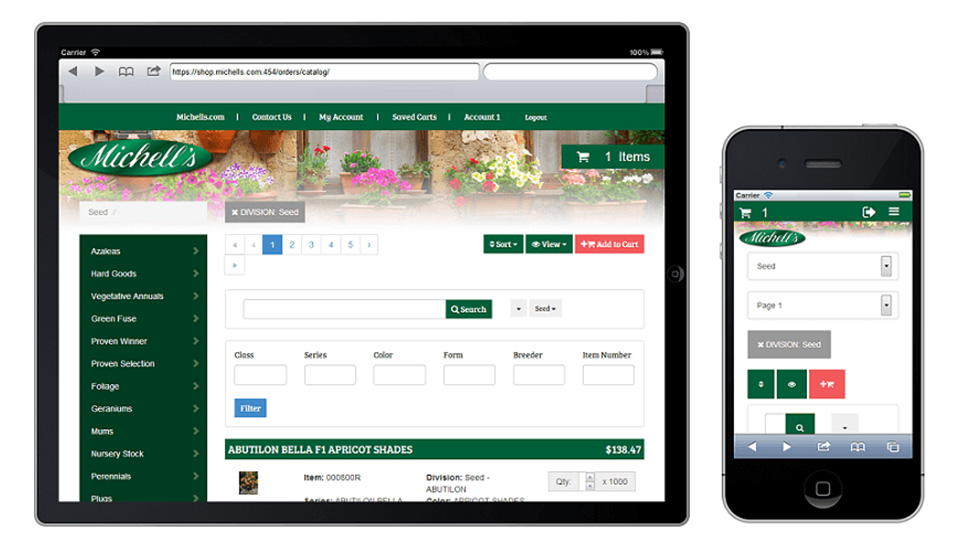Over the last 10 years, we have seen a huge change in usage and adoption of web and mobile applications. In that period, they’ve gone from zero to imperative due to advances in hardware and also because users have welcomed their many advantages. At the same time, our IBM i systems have become ever more powerful and capable – we just need to unlock the applications from the emulator. As the foundation of many IBM i businesses, these applications need to be shared with a much wider audience through the web and mobile devices.
In the previous decade, people often shunned smartphones as a fad and tablets as a gimmick; the same people are generally now out of business or trying to distance themselves from their comments.
One major shift here is that these devices have often been personally owned and this has led to a new expectation of quality and availability, not only in the social area, but in B2C and B2B.
Listed below are five points to consider if you have not already committed to web and mobile technology for growth in your business.
1. BYO and the 2.5 Billion
Today there are about 2.5 billion smartphones on the planet. Why would you not want your business to tap into this marketplace? B2B users now want access to everything they can do on the desktop any time, any place, on any device.
While you might not do heads-down data entry on a mobile device, the use cases for access to existing systems and applications on web and mobile are compelling. It is now easy to integrate your applications with other applications on telephones/tablets and even with very specific navigation, messaging, or camera functionality, giving users a rich, powerful, seamless experience. Customers, partners and employees will have the ability to access your applications and gain value from your services exactly when it suits their needs.
Web and mobile applications also provide employers the easiest way to support “bring your own device” (BYOD), a growing trend in business, allowing people to use the device they like (and which holds much of their business and personal life). Gone are the days of company-mandated beige laptops and Nokia “feature” phones with employees not allowed to put personal items on the device for fear of reprimand.
2. What’s the biggest OS?
If you think this is something you don’t need to worry about, consider this statistic: According to StatCounter Global Stats, Android now has 40% of the OS market share, putting it 4% above Windows OS (not Windows mobile – this is Windows on the desktop). Web and mobile applications provide the largest reach for your applications. Add in iOS and Mac, and you have another 20%. It’s hard to find a case where you would not want to be able to access well over 50% of devices out in the world. Web and mobile applications allow you to cover the desktop users of today with a modern productive experience and also satisfy users, customers and partners for whom there is a compelling case for mobile.
3. Mobile Usability for transactional business
I refaced an IBM i app onto an iPhone back in 2008 (the very day it arrived) and while it was a revolution to see IBM i on a mobile device, the vision didn’t match the technology. Today, we live in a very different world – the holy trinity that boosts mobile and web application performance is already upon us:
- Hardware speed – Devices today are running multiple cores with powerful GPU acceleration that makes them easily able to run modern powerful applications.
- 4G connectivity – We now have the speed to load pages quickly and be highly productive. When our kids are streaming HD to their phones, we no longer need to worry about page-to-page performance of applications even if we decide to work away from WI-FI, or when our customers want to purchase one of our finest widgets while out for a day’s shopping.
- Screen size – Some may long for the days when your phone could fit in the card holder pocket of your suit jacket but conversely, the extra size allows for enough information to be shown and a good size keyboard allows real steps forward in usability of web and mobile applications. Some of us may still head for a keyboard to make an online purchase, but there are entire generations working today who can type faster on a mobile device than we can on a full size QWERTY keyboard (unless you make them use F9 to confirm the purchase)!
Our customers have built applications leveraging functionality already inside their core systems. People often get caught up thinking in “emulator mode” (putting F-Keys on a tablet) or can’t see how to convert the green screen construct to the mobile and web world.
We have helped our customer free their core systems by applying universal principles of design to GUI conversion from green screen. This takes much of the effort out of the process, as you you focus on the core part of the screen while titles and function keys are handled in a way that works for the device.
 Of course, there are differences between desktop and mobile. For example, the Stafford Group created an iPhone app for their floor staff that uses existing functionality and constructs such as function keys, though mobile users see buttons and icons with the correct position and separation for the device.
Of course, there are differences between desktop and mobile. For example, the Stafford Group created an iPhone app for their floor staff that uses existing functionality and constructs such as function keys, though mobile users see buttons and icons with the correct position and separation for the device.
In this example, IBM i function keys do many different things, so just spewing out a list of buttons is a worse interaction for mobile than the original green screen. Each button needs to be separated out by function and then placed on-screen where it works for the device. OK and Exit are good examples: on a desktop, these would be together in the bottom right corner, but on a phone you want opposite tasks to be clearly separated, as your finger is accurate to around 28 pixels whereas a cursor is accurate to a single pixel. In addition, you may be walking with the device or using it one-handed. User needs (from desktop to mobile) are often the same, but the interaction to assist them has to be thought of in totally different ways. Fortunately, many of these design considerations are consistent for user types and can be applied application-wide by smart tools and a little up-front configuration.
4. You have most of the logic and work done already
Most companies I speak with have the majority of the code, if not all of it, to run mobile and web functionality. Rather than think about building big, new, expensive and risky (add your own worry here) technologies, think about leveraging what you already have. Modern tools help you easily enable existing applications to run as web or mobile, or you could just build some simple new front ends and leverage all the existing business logic you have for ease of use and integrity.
I have been stunned that many companies have lots of awesome apps that are hidden inside Client Access for Windows, and with just a little imagination, could enable remote workers, paperless solutions, customer portals, business partner access, and the list goes on. The majority of the functionality and value is already sitting inside your IBM i – it just needs to be set free with a bit of http and some love in the usability area. It’s often not about making all 2500 screens available – just 20-30 screens could make a huge difference to people out in the field or the difference between your customer buying from you or the competition.
5. The money issue
“OK, so what will it cost me to do this?”
Nowadays, I feel this is the most irrelevant question. We live in a world of agile development, lean manufacturing and a myriad of other mindsets around small iterations or experiments. I think the better question today is “OK, so what will it cost me if I don’t do this?” I don’t know the answer for your business, but I bet you can find a small, simple project to experiment on at low cost and prove the value to yourself and to the others in the business, if they are not already knocking the door down for mobile and web access to your applications.
In conclusion, if you are still not sure, ask others and get some feedback from users or customers on what you could do. Start small, try something, and learn from what you have done. If you have not already made the plunge, dip your feet in the water; gone are the days of the logic of big bang waterfall development approaches and Gantt charts. There is huge value in your existing system waiting to be leveraged – just don’t wait too long, as apps today can live and die by their perception, and if it’s stuck inside client access, and not on a decision maker’s device, it is legacy in their eyes… and possibly yours too. Don’t underestimate the possibilities of your current applications and/or robust IBM i platform!








 Of course, there are differences between desktop and mobile. For example, the Stafford Group created an iPhone app for their floor staff that uses existing functionality and constructs such as function keys, though mobile users see buttons and icons with the correct position and separation for the device.
Of course, there are differences between desktop and mobile. For example, the Stafford Group created an iPhone app for their floor staff that uses existing functionality and constructs such as function keys, though mobile users see buttons and icons with the correct position and separation for the device.


